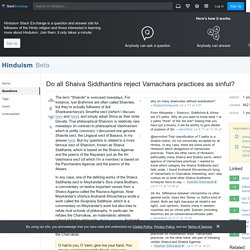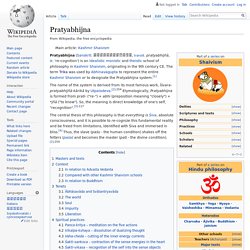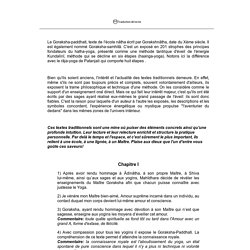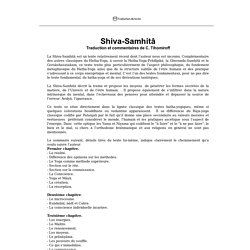

Sefer Etz Chaim 1:1.
Tantra - How is tantric sex, meat eating and alcohol consumption justified? - Hinduism Stack Exchange. As explained in this answer, Tantra is quite a deep subject and is meant to be kept as top secret too.

Neither i will be able to explain to you its secrets nor you will be able to grasp what is being said in its entirety but still here are few inputs from my side. Why use panchamakara in sadhana and how is it justified? It is justified because it is prescribed in the scriptures. That is reason enough. For example, if someone asks how are animal sacrifices justified?
The scriptures that prescribe them in sadhana, prescribe them for attaining moksha. Shaivism - Do all Shaiva Siddhantins reject Vamachara practices as sinful? - Hinduism Stack Exchange. Tirumular in Tirumantiram condemns Vamachara practises like drinking wine: 326: The Wicked Drink In VAma Tantra Lust and drink, fit for the wicked are they; In ritual unholy they drink and lose the senses But the wise drink the nectar streaming from his feet, Which destroys egoism and bigotry. 327: Drinking In Vama Tantra Worship Leads To Perdition They drink and perish, who to the vama sect belong.

The lustful ones in sensual delights are wholly lost; But the pure souls find the light of sacrifices in their inner flame; They, who his true name chant, approach him fast.328: Truth Eludes Drunkards They see not the inner truth, know not the pasu-pasa, They dwell not in the bounteous lord's divine grace; In the clear light of wisdom, Sivayoga they seek not, They, who soak in liquors, truth never can appraise. The Rig Veda/Mandala 10/Hymn 85. Shat-Sampat: Six-fold Virtues. The very root and core of all mental purification is through active practice of virtue.

Be determined never to swerve even an inch from the path of virtue. The mind has to be carefully trained and the will should be developed and strengthened. The development of a sensitive conscience and positive admiration for goodness and nobility plays a great part in jnana yoga. Āgama (Hinduism) - Wikipedia. The Agamas state three requirements for a place of pilgrimage: Sthala, Tirtha, and Murti.

Sthala refers to the place of the temple, Tīrtha is the temple tank, and Murti refers to the image of god (usually an idol of a deity). [citation needed] The Shaiva Agamas are found in four main schools: Kapala, Kalamukha, Pashupata and Shaiva, and number 28 in total as follows: KamikamYogajamChintyamKaranamAjithamDeepthamSukskmamSahasramAshumanSuprabedhamVijayamNishwasamSwayambhuvamAnalamVeeramRouravamMakutamVimalamChandragnanamBimbamProdgeethamLalithamSidhamSanthanamSarvokthamParameshwaramKiranamVathulam. Texts and Publications from the Rosicrucian Order, AMORC. The Rosicrucian Order, AMORC e-book library is available for free online!

We hope that you enjoy having this access to all of your favorite Rosicrucian publications and we would love it if you would consider posting a review on both Amazon and iBooks sharing with others the benefits that they might find in the timeless wisdom that this collection contains. The remaining AMORC titles will be added in the coming months so check back often!
Mystic Triangle The forerunner to the Rosicrucian Digest from 1925 through 1929, Dr. H. We are now happy to have all of the issues that were published scanned in and available as PDFs for your research and reading pleasure. Fragments of a Faith Forgotten, by G.R.S. Mead [1900] Title PageSynopsis of ContentsIllustrationsIndex Introduction IntroductionProlegomena Some Rough Outlines of the Background of the Gnosis Preliminary ConsiderationsGreeceEgyptPhilo on the Contemplative LifeJewryAlexandria.
![Fragments of a Faith Forgotten, by G.R.S. Mead [1900]](http://cdn.pearltrees.com/s/pic/th/fragments-faith-forgotten-mead-150878155)
Pratyabhijna - Wikipedia. Pratyabhijna (Sanskrit: प्रत्यभिज्ञा, translit. pratyabhijñā, lit. 're-cognition') is an idealistic monistic and theistic school of philosophy in Kashmir Shaivism, originating in the 9th century CE.

The term Trika was used by Abhinavagupta to represent the entire Kashmir Shaivism or to designate the Pratyabhijna system.[1] The name of the system is derived from its most famous work, Īśvara-pratyabhijñā-kārikā by Utpaladeva.[2]:254 Etymologically, Pratyabhijna is formed from prati- ("re-") + abhi (preposition meaning "closely") + *jñā ("to know"). So, the meaning is direct knowledge of one's self, "recognition".[3]:117 The central thesis of this philosophy is that everything is Śiva, absolute consciousness, and it is possible to re-cognize this fundamental reality and be freed from limitations, identified with Śiva and immersed in bliss.[4] Thus, the slave (paśu - the human condition) shakes off the fetters (paśa) and becomes the master (pati - the divine condition).[2]:254. Gorakshapaddhati, traduction intégrale en Français.
Le Goraksha-paddhati, texte de l'école nâtha écrit par Gorakshnâtha, date du Xème siècle.

Gorakshapaddhati, traduction intégrale en Français. Shiva-Samhita: traduction intégrale en Français à télécharger gratuitement! La Shiva-Samhitâ est un texte relativement récent dont l'auteur nous est inconnu.

Goraksha sataka. [ Fenêtre sur le Hatha Yoga - CENTRE JAYA ] Ce soir, et cela n’est pas habituel, je vais vous parler d’un domaine qui ne relève pas directement de la philosophie.
![[ Fenêtre sur le Hatha Yoga - CENTRE JAYA ]](http://cdn.pearltrees.com/s/pic/th/fenetre-hatha-yoga-centre-jaya-150512767)
Il participe toutefois intensément à la préparation de la pratique méditative en donnant au corps de la force, de l’endurance et de la stabilité.Je veux parler du HA-THA YOGA. Le mot HATHA est composé de deux syllabes.HA= soleil prâna, force de vie.THA= lune, énergie mentale. Il est dit que ce yoga est le plus violent mais aussi le plus rapide et ses effets quantifiables en sont la preuve. On l’associe au concept du mot "tapas" qui inclut à la fois la notion d’austérité et de pratique que représente la sadhana (la pratique spirituelle), mais aussi la notion de feu et de combustion.
Le travail du Hatha yoga, basé sur le pranayama, les asanas, et bien d’autres pratiques physiques, va accélérer le processus de combustion des toxines et de purification du corps, en chassant ses inerties et en réveillant les énergies dormantes et insoupçonnables. The Gnosis Archive: Resources on Gnosticism and Gnostic Tradition. 9 Taoist Books on the Elixir. L’art de cultiver la vie selon Ge Hong : traduction du chapitre XIII du Baopuzi neipian. Forum du Phare Gnostique, Samaël Aun Weor - Forum du Phare Gnostique.
Nous sommes le 25 juillet 2016, 00:06. Gnose de Samaël Aun Weor - Accueil. 35 Must-Read Spiritual Books You’ve Never Heard Of. Author Amateo Ra: You might have had an experience many of us share: We get an idea, a thought or even a dream with a theme that truly inspires us, stretches our minds or opens us up to a greater understanding ourselves and our lives. And, like magic, within a day or so, we find a book which not only confirms our thoughts and feelings, but goes deeper into the very idea we had than we even did.
How cool is it the Universe works with such magic & synchronciticy? Many of us have also experienced that moment where we find the perfect book at the right time, and it exactly addresses what we’ve been thinking about, wanting to learn more of or a story whose themes directly relates our current lives and experiences. Libros de Jorge Elias Adoum - Mago Jefa. L'entraînement de l'esprit en huit stances. Gheranda Samhitâ. Yoga Sutras of Patanjali 1.12-1.16: Practice and non-attachment. Two core principles: Practice (abhyasa, 1.13) and non-attachment (vairagya, 1.15) are the two core principles on which the entire system of Yoga rests (1.12). It is through the cultivation of these two that the other practices evolve, by which mastery over the mind field occurs (1.2), and allows the realization of the true Self (1.3).
Spandakārikā-s (Spanda Karikas) - Non-dual Shaivism of Kashmir - Sanskrit & Sánscrito. Introduction. Vijñāna. Vijñāna (Sanskrit; Devanagari: विज्ञान) or viññāṇa (Pāli; Devanagari: विञ्ञाण)[1] is translated as "consciousness," "life force," "mind,"[2] or "discernment. Spanda.